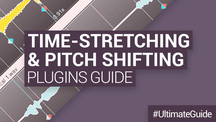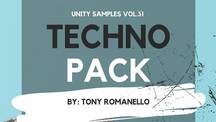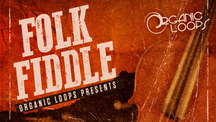Latest releases
Recent Releases
-
-
 ►i
►i
Life On Planets - Indie House
by: Loopmasters
-
 ►i
►i
Nightlife - Progressive House
by: Loopmasters
-
 AWARD
►i
AWARD
►i
Stranger Synths
by: Loopmasters
-
 ►i
►i
Indo House
by: Loopmasters
-
 ►i
►i
Serum2 Presets Vol. 2 - Peaktime Techno by Gizmo & Mac
by: Codex Samples
-
 ►i
►i
VERITAS - Melodic Techno
by: Keep It Sample
-
 ►i
►i
London Techno 3
-
 ►i
►i
Future Garage Essentials
by: IQ Samples
-
 ►i
►i
Afterlight: Industrial Drama
by: Leitmotif
-
 ►i
►i
ECHIDNA: Phase Plant Presets
by: DABRO Music
-
 ►i
►i
90's House Roots
by: Singomakers
-
 ►i
►i
Classic UK Dubstep
by: Element One
-
 ►i
►i
Raw Machinery: Hard Techno Toolkit
by: Freaky Loops
-
 ►i
►i
Launch Pad Series Vol 36 - Skaville
by: Renegade Audio
-
 ►i
►i
Chaotic IDM & Atonal Rhythms
by: Blind Audio
-
-
-
 ►i
►i
Abstract Beds
by: SFXtools
-
 ►i
►i
ELEMENTS: House Percussion Loops 3
by: HY2ROGEN
-
 ►i
►i
Obscure Boom Bap Tapes
by: BFractal Music
-
 ►i
►i
Percussions Indian
by: House Of Loop
-
 ►i
►i
Dub Pack Series Vol 19 - Dub Prophecy
by: Renegade Audio
-
 ►i
►i
Relaxed Dub
by: THICK Sounds
-
 ►i
►i
Ultimate Bass Collection Vol 3
by: Renegade Audio
-
 ►i
►i
Music4Aliens - Minimal and Techno V3 by Gizmo & Mac
by: Resonance Sound
-
 ►i
►i
EVERGREEN - Nuxe & Lucy Sugerman
by: 91Vocals
-
 ►i
►i
Cumbus
by: Image Sounds
-
 ►i
►i
Neuroverse - Psytrance
by: Zenhiser
-
 ►i
►i
Speed Garage
by: Dropgun Samples
-
 ►i
►i
Riemann House Fusion 1
-
 ►i
►i
Relentless Dancefloor Drum & Bass by Elemn
by: Black Octopus
-
 ►i
►i
Solar - Progressive Techno Samples by Imaginate
by: Black Octopus
-
-
-
 ►i
►i
The Madison Tech House EDM
by: Producer Loops
-
 ►i
►i
Freak Nu Disco Vol 2
by: Samplestar
-
 ►i
►i
Epicus - Film Foley & Sound FX
by: Loopmasters
-
 ►i
►i
Heart Felt Piano
by: Organic Loops
-
 ►i
►i
Relic Techno
by: RV Samplepacks
-
 ►i
►i
Mainground Techno Vol. 9 by NoNameLeft
by: Mainground Music
-
 ►i
►i
HAWK Tech House
by: Singomakers
-
 ►i
►i
Nu Disco Vocal Anthems
-
 ►i
►i
CALYPSO: Jungle
by: Ghost Syndicate
-
 ►i
►i
Botanica
by: Famous Audio
-
 ►i
►i
Drum & Bass Illusion
by: House Of Loop
-
 ►i
►i
CYCLONED: Phase Plant Presets
by: DABRO Music
-
 ►i
►i
Synapse
by: Form Audioworks
-
 AWARD
►i
AWARD
►i
Hollywood Hits: Aftershock
by: Cinetools
-
 ►i
►i
Arabic Afro House 3
by: HY2ROGEN
-
-
-
 ►i
►i
Iridescent: Deep House
by: Rewind Samples
-
 ►i
►i
Ambient Downtempo Dub Vol. 1
by: Renegade Audio
-
 ►i
►i
Conceptual Techno
by: BFractal Music
-
 ►i
►i
Mechanism - Dark Techno
by: Blind Audio
-
 ►i
►i
Launch Pad Series Vol 35 - Riddim Revival
by: Renegade Audio
-
 ►i
►i
Serene Progressive House
by: THICK Sounds
-
 ►i
►i
Ultimate Percussion Collection Vol 3
by: Renegade Audio
-
 ►i
►i
Rawtekk DnB Work 3
by: Noise Design
-
 ►i
►i
Space Motion Melodic Techno
by: Dropgun Samples
-
 ►i
►i
Big Beat Guitars
by: Image Sounds
-
 ►i
►i
Vocal Tech House Vol.1
by: Rasster Samples
-
 ►i
►i
Big Room Tech House
by: Black Octopus
-
 ►i
►i
UK Bass Ultra Pack
by: 91Vocals
-
 ►i
►i
Deep In
by: Producer Loops
-
 ►i
►i
Vandal
by: Zenhiser
-

-
 Studio
Studio
Artist Series: Best of Deep House
-
 Studio
Studio
Artist Series: Best of Techno
-
 Studio
Studio
Artist Series: Best of Drum and Bass
-
 Studio
Studio
Artist Series: Best of Hip Hop
-
 Studio
Studio
Artist Series: Best of Tech House
-
 DAW Tutorials
DAW Tutorials
How to create your own vocal chops
-
 Studio
Studio
How to get Samples in Key with your Track
-
 Plugins
Plugins
The Best Timestretch and Pitchshifting Software & Plugins
News and Reviews
-
 news
news
Loopmasters Holiday Advent Calendar - A New Gift Every Few Days
-
 news
news
Black Friday Deal: Get a Free Sample Pack with Every Purchase at Loopmasters!
-
 review
review
Unity Records – Unity Samples Vol.31 by Tony Romanello Future Music Review
-
 review
review
Organic Loops - Folk Fiddle - Computer Music Magazine Review
VIP Reviews
available_prices
Loopmasters is the definitive place to find the best sample libraries for your music. With the latest sounds from established producers, industry heavyweights and upcoming beatmakers, provided as royalty free samples and loops. Every one of our sample packs is crammed with the best music samples, meticulously produced, prepared and formatted for smooth integration in your workflow.
We’ve got the best sample packs for House, Techno, Drum & Bass, EDM and loads more, with live music sample packs and instrument sample libraries to embellish and develop your unique sound. Our royalty free music samples come from artists, producers and instrumentalists across the globe, ensuring you get the best loops played and recorded at the highest quality by seasoned professionals and top studio engineers.
Download royalty free sounds from our website or using Loopcloud, the online cloud-based browser where you’ll find exclusive content each week free to add to your music sample library. Browse our entire catalogue and discover more royalty free music loops - download samples you like using our intuitive software, which integrates seamlessly with the major daws.
Our royalty free music samples come organised and labeled so you can be sure of staying in key and getting the tempo right, and in the most popular formats, with rex loops, acidized wavs and apple loops to suit your preference.
































